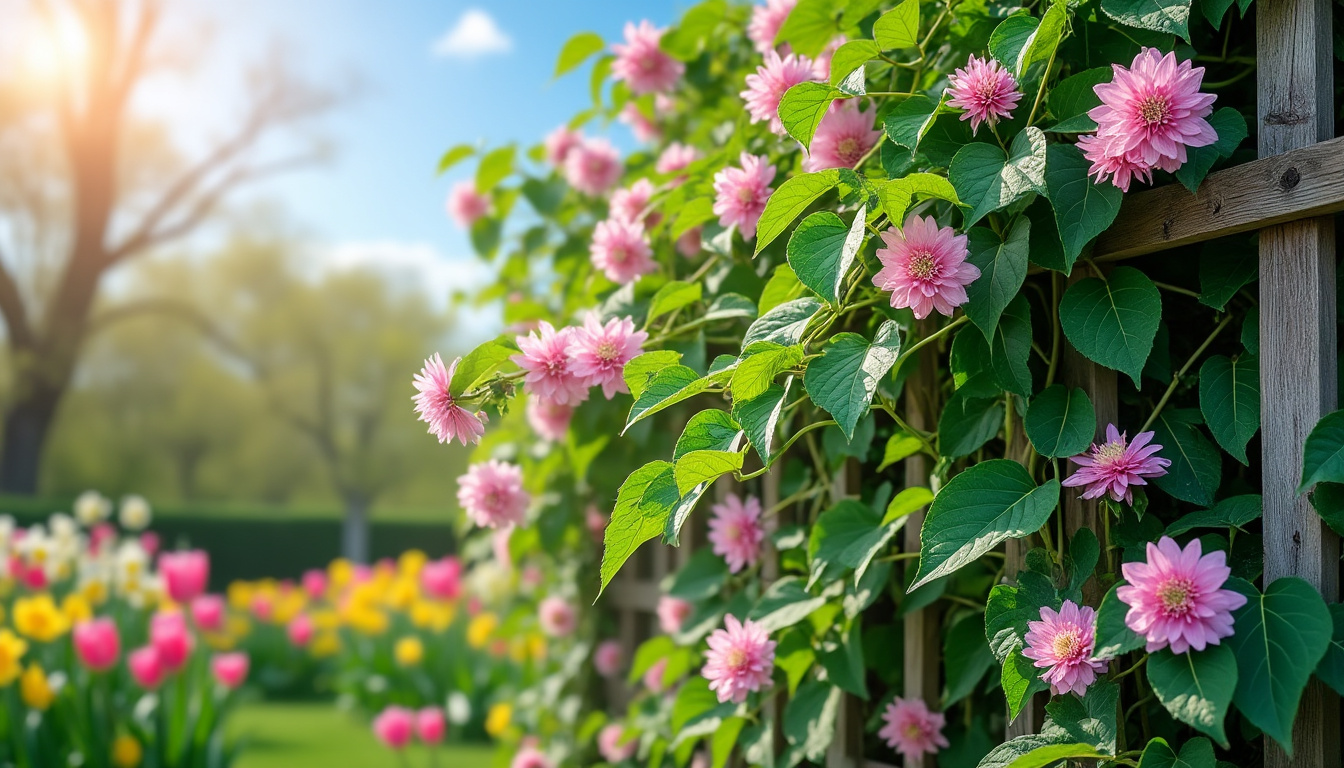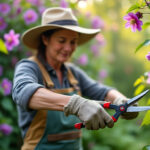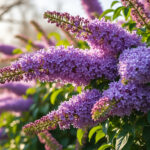When it comes to enhancing the beauty of outdoor spaces, few plants can rival the stunning blooms of the clematis montana. Understanding the ideal times for pruning this vigorous vine is crucial for achieving optimal growth and abundant flowers. This article delves into the intricacies of clematis care, focusing on the specific pruning needs of clematis montana throughout its growth cycle, ensuring that gardeners can cultivate a lush, vibrant display.
1. Understanding Clematis Pruning Groups
2. The Essential Timing for Pruning Clematis Montana
3. Step-by-Step Techniques for Pruning Your Clematis
4. Aftercare Following Pruning for Optimal Growth
5. Common Mistakes to Avoid When Pruning Clematis
Understanding Clematis Pruning Groups
Pruning clematis correctly is paramount for its health and blooming potential. Understanding the specific growth patterns of different clematis groups helps determine the ideal pruning methods. Clematis montana falls into the first group of clematis, which is characterized by early flowering. This group typically blooms on old wood, meaning that the flowers develop on the stems that have already grown during the previous season.
Group Characteristics
Here is a breakdown of the clematis groups:
| Group | Flowering Period | Pruning Time | Examples |
|---|---|---|---|
| Group 1 | Late winter to early spring | Immediately after flowering | Clematis montana, Clematis alpina |
| Group 2 | Late spring to early summer and late summer to fall | In early spring | Nelly Moser, Henryi |
| Group 3 | Midsummer to fall | Late winter or early spring | Clematis viticella, Jackmanii |
For clematis montana, which blooms in late spring, the ideal pruning time is just after the blooming period ends. This timing is critical to avoid cutting off the flower buds that will develop for the following year. In contrast, the other groups will have different needs, as they may require pruning at various times throughout the year to stimulate continued growth and blooming.
Benefits of Knowing the Pruning Group
Learners of clematis care will find that understanding which group their clematis belongs to facilitates better garden management. Each group has specific characteristics that affect not only the pruning times but also the overall health of the plant. Group 1, for instance, is suitable for those who appreciate the lovely early spring blooms that can add vibrant color when few other plants are flowering. However, incorrect timing or severe pruning can diminish the flowering potential significantly. Thus, knowing the group’s attributes ensures that effort yields rich rewards.
The Essential Timing for Pruning Clematis Montana
For clematis montana to thrive and showcase its breathtaking blooms, timing is everything. Pruning at the right moment is essential for encouraging healthy growth and plentiful flowers. As previously mentioned, the optimal pruning time falls right after its flowering period in late spring.
Significant Pruning Periods
Consider the following timeline for optimal pruning:
- 🌼 Spring After Flowering: This is when pruning should take place. Wait until all the flowers have faded.
- 🧊 Avoid Fall Pruning: Pruning in the fall can risk removing buds for the following year’s growth.
- ☀️ Focus on Health: This is an excellent time to remove any dead or damaged stems, allowing for better air circulation and light penetration.
This targeted pruning approach not only stimulates new growth but also reduces the risk of diseases that can manifest in the plant’s core when there is overcrowding. A thorough examination of the plant should be conducted at this point to remove any stems that cross over or could potentially harm other sections of the vine.
Additional Timing Considerations
Seasonal weather patterns can also play a vital role in determining when to prune clematis montana. Gardeners should avoid pruning during prolonged wet periods to minimize stress on the plant. Monitoring the local climate, including temperature variations and anticipated rainfall, aids in ensuring the clematis receives care suited to its needs. For instance, if an unexpected frost is forecasted, it is advisable to delay pruning activities to protect the plant.
Step-by-Step Techniques for Pruning Your Clematis
Armed with the knowledge of timing, the next crucial step is to master the actual pruning techniques necessary for maintaining the health and beauty of clematis montana.
Tools Needed for Pruning
Getting started with appropriate tools ensures clean, effective cuts:
- 🔪 Sharp Pruning Shears: Essential for making precise cuts on thinner stems.
- 🌳 Loppers: Ideal for thicker, woodier stems that require more strength to prune.
- 🧤 Gardening Gloves: Protect against thorns and sap while handling the plant.
Sanitizing tools prior to use is also vital to prevent disease spread. Use rubbing alcohol or bleach solutions to sterilize the blades.
Pruning Techniques
When engaging in the pruning process, consider the following techniques:
- 🌱 Remove Dead Stems First: Start by eliminating dead, damaged, or weak stems to promote stronger growth.
- ✂️ Angle Your Cuts: Make cuts at a 45-degree angle just above a leaf node, directing new growth outward.
- 🌿 Prune to Shape: Shape the plant carefully by trimming back only what is necessary to maintain an attractive profile.
Careful, thoughtful pruning will not only enhance the appearance of the clematis montana but also significantly contribute to its overall vitality.
Deadheading Essentials
In addition to pruning, the act of deadheading—removing spent flowers—is essential for promoting further blooms throughout the season. This process should be performed immediately after flowering and involves cutting back to the nearest healthy leaf node.
Aftercare Following Pruning for Optimal Growth
After completing the pruning process, providing care helps the plant settle into its rejuvenated form. Proper aftercare ensures that clematis montana continues to thrive and display its blossoms. This care entails several facets: watering, fertilizing, mulching, and pest control.
Watering and Feeding Guidelines
To promote vigorous growth post-pruning, deep watering is vital. This encourages strong root development, making the plant more resilient:
- 💧 Water Deeply: Offer approximately an inch of water per week, making sure to water at the base rather than on the foliage to avoid fungal issues.
- 🪴 Fertilize: Apply a balanced fertilizer, like a 10-10-10 or 5-10-5 mix, to boost growth. This application should usually be towards the base of the plant.
Fertilizer applications during a growing season will benefit the plant substantially, helping produce a stronger foundation for blooms.
Mulching and Pest Control
Applying mulch around the base of the clematis can help retain moisture and regulate soil temperature. Here are some key pointers:
- 🌾 Apply Organic Mulch: A 2-3 inch layer of organic materials like straw or wood chips effectively retains moisture.
- 🦠 Monitor for Pests: Regular inspection for pests like aphids can deter potential infestations. Using neem oil or insecticidal soap aids in containing them.
Combined, these practices aid clematis montana in recovering from pruning while thriving in its environment.
Common Mistakes to Avoid When Pruning Clematis
Even experienced gardeners can make mistakes when pruning clematis montana. Recognizing these pitfalls can facilitate better outcomes and prevent frustration. Here are some frequent errors to be aware of:
Over-Pruning
Pruning too heavily can lead to excessive leaf loss and diminished blooms. Here’s how to recognize and mitigate this issue:
- ❌ Signs of Over-Pruning: Yellowing leaves and diminished flowering are indicators your clematis is stressed.
- 🌱 Moderate Cuts: Always opt for minor cuts rather than extreme reductions to safeguard flowering potential.
Incorrect Timing
Pruning at the wrong time can severely impact the flowering cycle. Here are the timing thresholds:
- ⏰ Spring Pruning: Essential right after flowering; avoid late-season cuts.
- 📅 Autumn and Winter Pruning: Must be avoided for those in Group 1, such as clematis montana, as it risks future blooming.
Using Dull Tools
Poorly maintained tools can damage plants instead of promoting healthy growth:
- 🔪 Inspect Tool Sharpness: Dull instruments can crush stems, leading to rot and disease.
- ✴️ Regular Maintenance: Ensure tools are sharpened before the pruning season begins.
Through comprehensive awareness of these pitfalls, gardeners can approach clematis montana care with confidence, ensuring successful pruning and care strategies.
The best time to prune clematis for thriving growth
FAQ
What is the best time of year to prune clematis montana?
The ideal time to prune clematis montana is immediately after flowering in late spring, avoiding any fall pruning.
Can I prune my clematis montana in the fall?
It’s generally not recommended to prune clematis montana in the fall, as this may remove flower buds meant for the next season’s blooms.
What tools should I use for pruning clematis montana?
Use sharp pruning shears for small stems and loppers for larger stems. Always wear gloves to protect from thorns.
How often should clematis montana be watered after pruning?
Water deeply once a week, ensuring the soil is consistently moist without becoming waterlogged.
What are some signs of stress in clematis montana after pruning?
Signs of stress may include yellowing leaves, excessive leaf drop, and reduced blooming capacity. Adjusting watering and care routines can often resolve these issues.
















